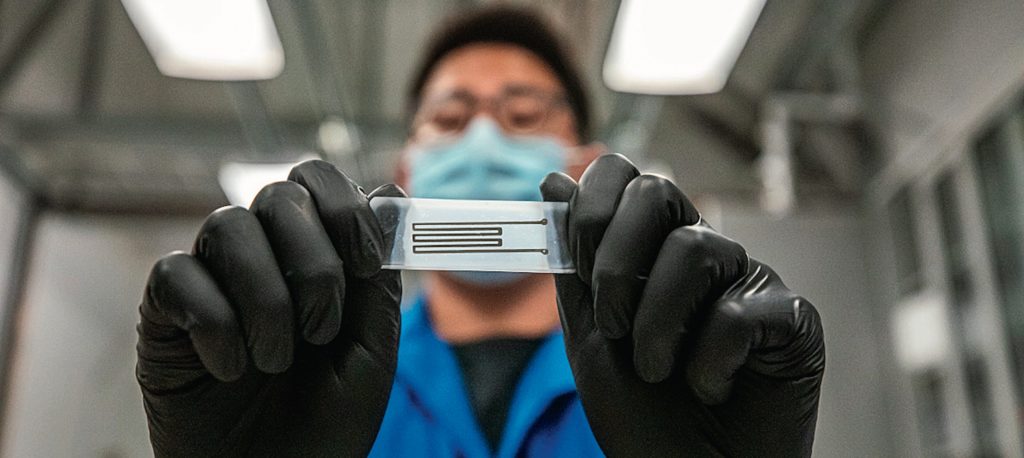Three UC Berkeley computer science researchers walk into a bar. A facial-recognition camera scans each of their faces individually, and they soon hear their favorite music blasting (or wafting) from the bar’s speakers.
If this seems like a poor setup for a joke, that’s because it isn’t one. It’s one possible application for the Smart Jukebox project, one of a host of projects being pursued by a partnership of research institutions through what has been dubbed the TerraSwarm Research Center. TerraSwarm—which is holding its annual “show and tell” conference on the Clark Kerr campus through Nov 6—aims to develop technologies for use in a future where trillions of remote sensors share data with each other. Teams of researchers dedicated to goals such as creating smart cities, crafting a hands-free mobile device, or just building better sensors displayed their progress, as students and industry members looked on.
Researchers set up the Smart Jukebox in a classroom that quickly filled with onlookers. In keeping with TerraSwarm’s theme, the jukebox is a collaboration between two research groups. The first deals with facial recognition; the second studies computer improvisation of music. To see what happens when these teams join forces, participants can let a camera scan their face, and then input their name. Next they are given a choice of three jazz standards, along with a sliding scale, ranging from “conservative” to “wild,” that stipulates how fast and loose the computer can get with its improvisation.
After giving the camera my good side, I chose Duke Ellington’s “It Don’t Mean A Thing” and cranked the scale all the way to “wild.” I then stood in front of another camera, and within a few moments, my name appeared on a screen below and a familiar tune started to play.
Well, more or less familiar. Given enough free rein, the computer plays some odd phrases. The effect is like listening to a jazz student messing around on a piano: moments of clarity segue into bizarre combinations. Still, it’s remarkably good considering the source.
For insight into how a computer can learn to play jazz, look for my Lab and Field article in the upcoming Winter 2013 issue of CALIFORNIA magazine.
—Austen Fiora




















